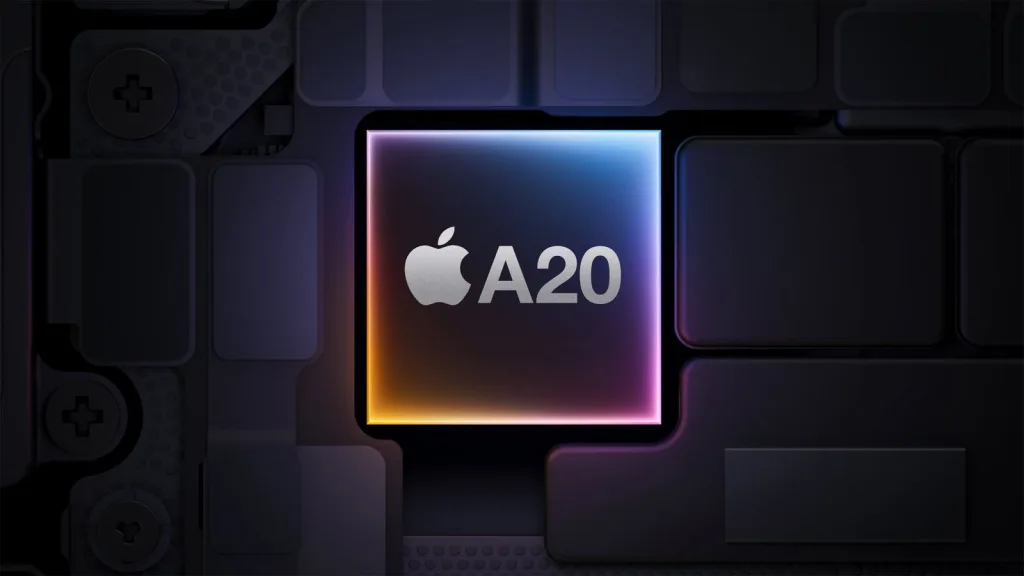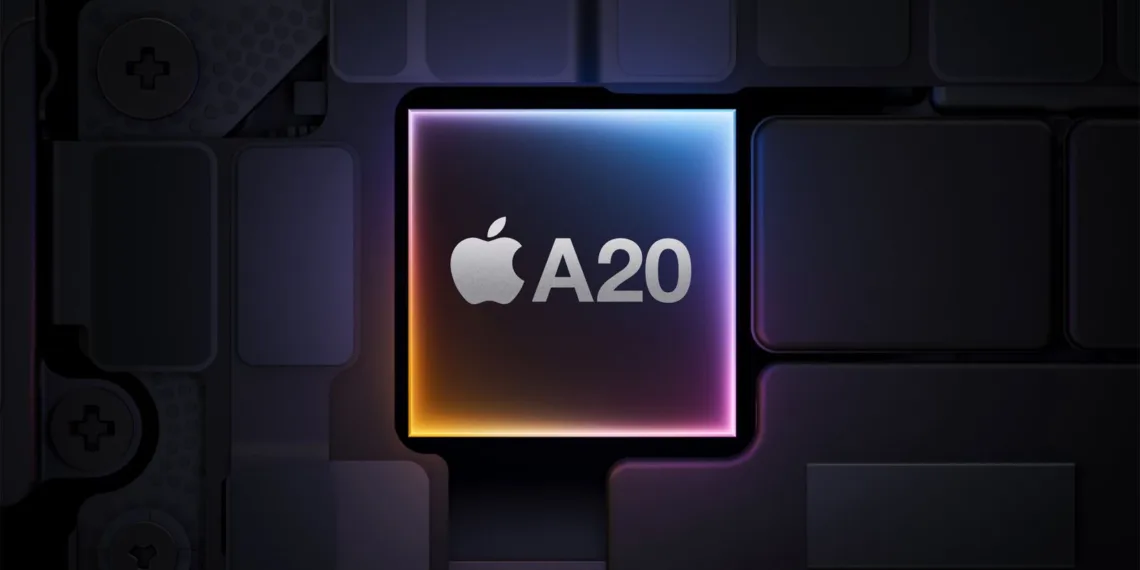Apple is gearing up to make history with the iPhone 18, as renowned analyst Ming-Chi Kuo confirms that its A20 chip will be built using TSMC’s cutting-edge 2nm process. This shift marks a significant leap in performance and power efficiency, setting the stage for the next-generation iPhone experience.
Table of Contents

The Significance of Apple’s 2nm A20 Chip
The move from a 3nm to a 2nm process in the A20 chip is a technological milestone that will impact every aspect of iPhone 18’s performance. Smaller transistor sizes allow for greater density, meaning more computing power can fit into the same physical space. This directly results in increased speed, improved power efficiency, and better thermal management.
For users, this means faster app launches, smoother multitasking, and longer battery life. Whether you’re a gamer, a professional relying on high-performance apps, or someone who simply wants a seamless mobile experience, the A20 chip is set to deliver major improvements.
Breaking Down the 2nm Process
Understanding chip technology can be complex, but in simple terms, the 2nm process means that the distance between transistors on the chip is just 2 nanometers. This is significantly smaller than the A19’s 3nm architecture, allowing more transistors to be packed into a single chip. More transistors mean more processing power, enabling better efficiency and performance per watt.
TSMC, Apple’s long-time chip supplier, has been working extensively to refine its 2nm production, and recent reports suggest that their trial production yield rates have already surpassed the 60-70% mark. This is a strong indicator that mass production will be viable in time for the iPhone 18’s launch.
What the A20 Chip Means for iPhone 18 Users
1. Improved Performance
The A20 chip is expected to be up to 15% faster than its predecessor, the A19 chip. This performance boost will be noticeable in everything from opening apps to handling complex computational tasks like video editing and gaming.
2. Increased Power Efficiency
With a projected 30% increase in power efficiency, the A20 chip will allow the iPhone 18 to run longer on a single charge. This is particularly beneficial for users who rely on their phones throughout the day for work, entertainment, and communication.
3. Better Thermal Management
Smaller transistors and improved efficiency mean less heat generation. Overheating has been a concern with high-performance smartphones, and the 2nm architecture will help manage temperatures better, making the iPhone 18 more comfortable to use even under heavy workloads.

A Comparison of Apple’s Recent Chip Evolution
Apple has consistently pushed the boundaries of chip innovation. Here’s how the last few generations have progressed:
- A17 Pro (iPhone 15 Pro) – 3nm (N3B process)
- A18 / A18 Pro (iPhone 16) – 3nm (N3E process)
- A19 / A19 Pro (iPhone 17) – 3nm (N3P process)
- A20 / A20 Pro (iPhone 18) – 2nm (N2 process)
While these nanometer sizes are more of a marketing term than an actual physical measurement, they represent significant advancements in efficiency, performance, and transistor density.
Why the A20 Chip is a Big Deal for Apple and the Smartphone Industry
Apple has always been at the forefront of semiconductor technology, and the transition to 2nm places it ahead of competitors like Qualcomm and Samsung. This advancement means:
- Better AI Capabilities: AI and machine learning tasks will be executed faster and more efficiently.
- Enhanced Graphics Performance: Mobile gaming and augmented reality (AR) applications will see major improvements.
- More Computational Power: iPhones will be able to handle more complex processes without draining the battery quickly.
- Stronger Competition in the Tech Industry: As Apple leads the charge in adopting 2nm chips, competitors will need to accelerate their own chip advancements to keep up.
The Future of iPhone Chips: What Comes After 2nm?
While 2nm is a huge milestone, chip manufacturers are already exploring what comes next. TSMC is reportedly working on 1.4nm chips, which could debut in future iPhone models beyond the iPhone 18. The challenge lies in maintaining production yields, managing power efficiency, and ensuring cost-effectiveness.
When Can You Expect the iPhone 18?
With the iPhone 18 expected to launch in September 2026, Apple still has time to refine the A20 chip and optimize its performance. The improvements brought by the 2nm process will likely be a major selling point, attracting both loyal Apple users and potential new customers who prioritize top-tier performance and efficiency.
Final Thoughts: Is the iPhone 18 Worth Waiting For?
If you’re someone who values cutting-edge technology, the iPhone 18 and its A20 chip are definitely worth waiting for. With a significant boost in speed, better battery life, and improved heat management, Apple’s next-gen device is shaping up to be a powerhouse in the smartphone market.
As we move closer to the launch date, more details will emerge about the iPhone 18’s features, but one thing is clear—the A20 chip is set to revolutionize the iPhone experience yet again.
Stay tuned for further updates on Apple’s advancements and how they’ll impact the future of mobile technology!








